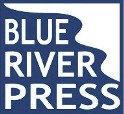Blog
Were You Born Creative? Or Not?
Creative Minds
A Regular Column by Anthony D. Fredericks
 Were You Born Creative? Or Not?
Were You Born Creative? Or Not?
How often have you heard the following statements? Alternatively, and more specifically, how often have you said these statements yourself?: “I couldn’t draw a straight line if my life depended on it.” “If you’re looking for a creative person, you might as well look somewhere else.” “Me? Creative? No way, José.”
There is a persuasive tendency of people to downplay their creative talents or place limits on their creative output. Many people believe they aren’t creative simply because they weren’t born with a creative gene. Believing we don’t have creative attributes becomes a self-fulfilling prophecy. As a result, our creative confidence dwindles, erodes, and is washed away. We often fall into the all too common perception that we were either born creative or not.
As you might expect, that’s a myth!
Truth be told, the “I’m creative” and “I’m just not creative” groups are imaginary – we’re not one or the other. As shared throughout the pages of From Fizzle to Sizzle: The Hidden Forces Crushing Your Creativity and How You Can Overcome Them, we are all creative individuals as children, it’s just that that creativity has been steam-rolled into submission as we get older and begin to deal with the realities of everyday living.
Psychologists Kaufman and Gregoire describe the similarities between those often self-designated as “Creative” and those who self-select the “I’m not creative” moniker. In fact, as you review their list of characteristics (below) you will note that many of these beliefs and personality dynamics are also those that have been an inherent part of your own life. It could well be said, that the characteristics of “Creatives” are the same characteristics that are part and parcel of your past as well as your present. As From Fizzle to Sizzle presents, however, some of those features have been systematically crushed, pummeled, mashed, and trampled as we have grown up, gone to school, and gotten a job.
Here are ten attributes of creative types. Note how many of these attributes apply to you now or were once an element of your younger years:
- I played imaginative games as a child.
- I have, or have had, a passion for something important in my life.
- I’ve been known to daydream about things unrelated to my work.
- I enjoy doing things on my own or by myself.
- I sometimes “just know” something is right; I’ve been intuitive at times.
- I’m open to learning new things and having new experiences.
- I’ve meditated or engaged in mindfulness activities.
- I’m sensitive to the needs and feelings of others.
- I’ve been able to turn adversities into advantages.
- I sometimes think about things others do not.
I suspect you have experienced more than one or two attributes from that list. Thus, it seems reasonable to assume that almost all of us, at one time or another in our lives, have engaged in common practices and shared performances emblematic of creative thinking. That is to say, no matter your perceived station in life, you have the components of creative thinking already “in your system.” In short, you are more similar to those arbitrarily classified as “Creative People” than you are different.
__________________
 Dr. Anthony D. Fredericks is an award-winning author of more than 170 books, including From Fizzle to Sizzle: The Hidden Forces Crushing Your Creativity and How You Can Overcome Them as well as five other Blue River Press titles (e.g. Ace Your Teacher Resume). He also pens a regular blog for Psychology Today.com (https://www.psychologytoday.com/us/ contributors/anthony-d-fredericks-edd)
Dr. Anthony D. Fredericks is an award-winning author of more than 170 books, including From Fizzle to Sizzle: The Hidden Forces Crushing Your Creativity and How You Can Overcome Them as well as five other Blue River Press titles (e.g. Ace Your Teacher Resume). He also pens a regular blog for Psychology Today.com (https://www.psychologytoday.com/us/ contributors/anthony-d-fredericks-edd)
Saint Patrick’s Battalion
 We have heard of the Revolutionary War. We have heard of the Civil War. There was another war fought between 1846 and 1848. The Mexican-American War. With a deep interest in this war, New York Times bestselling author, James Alexander Thom, began to research it. He then took out his notepad and pen, (yes, he first writes his books in long hand) and developed a story revolving around this war and how it involved the Irish Catholic Americans and the Mexicans who fought. Saint Patrick’s Battalion is this story.
We have heard of the Revolutionary War. We have heard of the Civil War. There was another war fought between 1846 and 1848. The Mexican-American War. With a deep interest in this war, New York Times bestselling author, James Alexander Thom, began to research it. He then took out his notepad and pen, (yes, he first writes his books in long hand) and developed a story revolving around this war and how it involved the Irish Catholic Americans and the Mexicans who fought. Saint Patrick’s Battalion is this story.
Proud and doomed, these rogue Irish gunners fought against those who they once fought side-by-side in order to defend Catholic Mexico against the U.S. Army that was attacking them. They would either hang as turncoats, win the battle, or die trying.
The Mexicans held them as saviors- brave and heroic. Their former comrades viewed them as contemptable traitors.
In Saint Patrick’s Battalion, you will view the war through the eyes of young Paddy Quinn, a camp boy who journaled his experiences of sometimes horrendous army life. This page-turning story reveals the cruel choices men must make during a time of war as Thom shines the light on a side of the Mexican-American War that is often overlooked.
Praise for the hardcover edition of Saint Patrick’s Battalion
“A hell of a book…a world-class writer.” – Kurt Vonnegut
 “That awful war (the Mexican War) has never been described so well in fiction or nonfiction.” – Howard Zinn, author of A People’s History of the United States
“That awful war (the Mexican War) has never been described so well in fiction or nonfiction.” – Howard Zinn, author of A People’s History of the United States
“Thom constructs a gripping novel that questions our concepts of war, duty, loyalty, and national identity and draws intriguing parallels to our current conflict in Iraq.” – Irish American News
“Thom has taken this forgotten incident from an almost forgotten war and turned it into a stirring tale that does everything that smart historical fiction ought to do: illuminating the past while throwing new light on the present.” – Publishers Weekly; starred review
“Thom delivers an artfully crafted meditation on war, nationalism and courage in desperate circumstances.” – The Indianapolis STAR
“The two young narrators are vivid and unforgettable, and the war narrative fast-paced. Illumination and compelling, Saint Patrick’s Battalion presents a stirring and provocative look at American Manifest Destiny…Highly recommended.” – Historical Novels Review
To see more fascinating books from intriguing fiction, to amazing true facts in sports history, to challenging trivia and puzzle books, to our fascinating young readers’ All About…Series, look around our books shop. If you have any questions, you can contact us here.
Happy Reading ~ Ginger Bock
Blue River Press released its first book in the spring of 2004.
Our authors, editors and designers always keep the reader in mind when creating and developing the content and designing attractive books that are competitively priced.
At Blue River Press our mission is to produce, distribute and market books that present the reader with good educational and entertaining information at a value.
